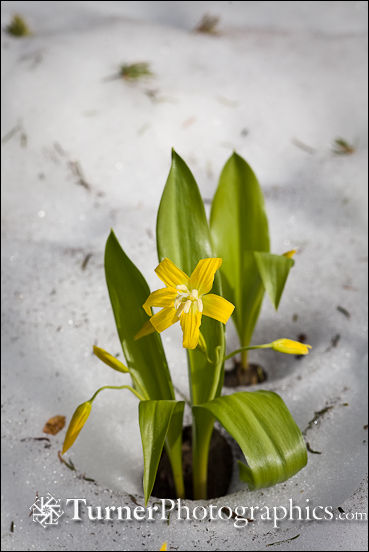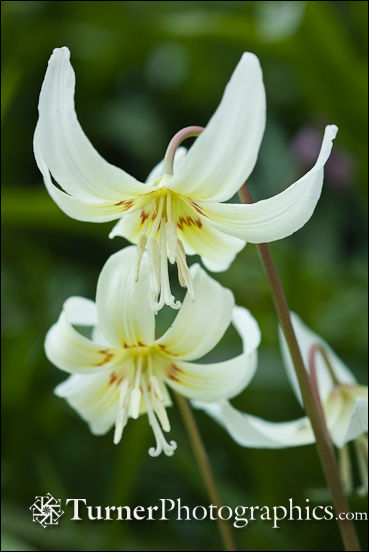Plant of the Month: Erythronium
 This month we’ll explore a whole genus of plants rather than single species. They’re the Erythroniums and there are species that grow in a wide range of habitats all across the country. I first learned them as Dog-tooth Violets in the mid-Atlantic forests. Various members of the genus are also called Trout Lily, Adder’s Tongue, Fawn Lily, Glacier Lily, or Avalanche Lily. No matter what you call them they are members of the Lily family.
This month we’ll explore a whole genus of plants rather than single species. They’re the Erythroniums and there are species that grow in a wide range of habitats all across the country. I first learned them as Dog-tooth Violets in the mid-Atlantic forests. Various members of the genus are also called Trout Lily, Adder’s Tongue, Fawn Lily, Glacier Lily, or Avalanche Lily. No matter what you call them they are members of the Lily family.
The flowers come in various shades of yellow, pink, or white, often with patterns on the petals. Early in the spring the broad, strap-like leaves emerge from the underground bulb, soon followed by a stem bearing one or more down-facing blossoms. The flowers hang down to protect the stamens and pistil from spring rains. After the flowers have been pollinated and the petals drop the seedpod turns and points straight up.
One of the common species of Erythronium in the northwest is the Glacier Lily, Erythronium grandiflorum. It has bright yellow blossoms and grows in several ecological niches. I first saw Glacier Lilies in the alpine, where they grow in full sun and emerge at the edge of melting snowbanks. The bulb contains so much energy that Glacier Lilies can melt a hole in the snow for their emerging foliage and may even bloom while still surrounded by snow. But Glacier Lilies aren’t limited to the alpine. In April you can find them blooming along the old Columbia River highway between The Dalles and Mosier. I saw them nodding in the breeze in the freeway median near Coeur d’Alene on April 2, and they’re emerging under the Ponderosas in my friend Pat’s Spokane back yard. They’re native to most counties in Washington and Oregon and will take to cultivation in your garden.
 Not quite as widespread, but perhaps even showier, is the Oregon Fawn Lily, Erythronium oreganum. It has speckled leaves and white flowers with touches of yellow. I’ve only seen it at lower elevations. Another low-elevation northwest species is Pink Fawn Lily, Erythronium revolutum, which is neither as common nor widespread. The two grow together in Hi-Knoll Park on the border between Surrey and Langley, BC.
Not quite as widespread, but perhaps even showier, is the Oregon Fawn Lily, Erythronium oreganum. It has speckled leaves and white flowers with touches of yellow. I’ve only seen it at lower elevations. Another low-elevation northwest species is Pink Fawn Lily, Erythronium revolutum, which is neither as common nor widespread. The two grow together in Hi-Knoll Park on the border between Surrey and Langley, BC.
If you plant Erythroniums in your garden they will interbreed and form hybrid offspring. I purchased a start a couple of years ago that I think has both pink and white ancestors. I’ve planted it in my garden where is gets just a hint of sun. Since the foliage will die back in the summer, disappearing completely above ground, I placed it near a hosta that emerges late and will take the place of the delicate, but ephemeral, trout lily.
See more photos of Erythroniums on my Pacific Northwest Wildflowers website. There are 7 species there.

